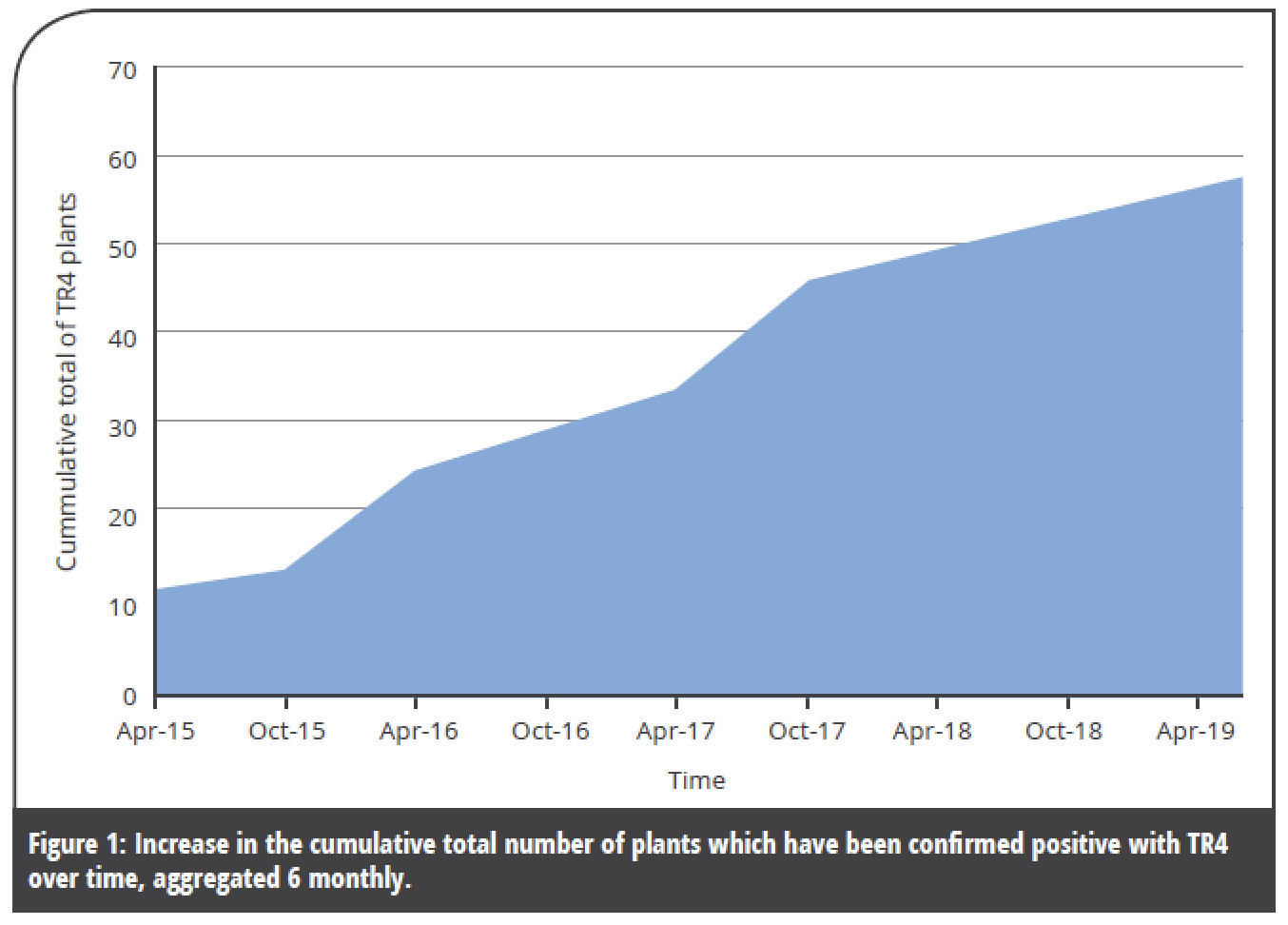By Dr Rosie Godwin
Since the initial detection of TR4 in the Tully Valley in March 2015, alerting growers and the community in general of any new farms with TR4 has been a priority of Biosecurity Queensland (BQ) and the ABGC.
As most would know, there have been three farms confirmed with the disease in almost four-and-a-half years.
Over this time, more infected plants have been tested and confirmed with TR4 on these already infested properties, however, these have not been publicly broadcast, most significantly because;
• Additional detections do not change the biosecurity situation on the property as the whole property is subject to biosecurity restrictions and,
• Protecting the privacy of growers affected by TR4.
However, the ABGC is aware that a level of complacency could naturally exist, if people are not aware of the continuing spread of TR4 on these infested properties (IPs) – the second IP confirmed July 2017 and third IP February 2018.
With the permission of the owners of these two IPs that continue to operate with TR4, this article aims to explain the extent of the spread of TR4 in the top of the Tully Valley and some of the reasons why it is not yet out of control.
1. Distance of spread
• TR4 has spread more than 12 Km since the first detection (March 2015) and it has spread both uphill and up-river.
2. Rate of spread
• The total number of plants over the infested farms that BQ have confirmed positive with TR4 since March 2015 is close to 60 (Figure 1).
• TR4 is spreading with time (Figure 1) but a range of actions – namely growers’ on-farm biosecurity measures; the purchase of the first infected farm and destruction of all of its bananas; the quarantine and containment measures imposed by BQ; plus early detection and rapid destruction of infested plants – have slowed the spread significantly. This is even more evident when you compare Australia to other countries with TR4 where no or ineffective control measures were put in place.
• For instance after TR4 was detected in Mozambique, it was estimated to be spreading at the rate of 10, 000 trees per week. In the four years after TR4 was first detected in China, the area of land affected by TR4, increased from 14 ha to 14,000 ha (the size of the Australian Industry). Over the last 15 years, it has spread to >100,000 ha in China. (See the last Australian Bananas Magazine for the full article on TR4 spread in China p34-35).
• At the moment, measures implemented at the three infested farms in the Tully Valley are protecting the industry, but growers need to protect their own farms so that TR4 doesn’t become widespread.
• The current slow rate of spread is buying time for industry, but when the rate of TR4 spread becomes exponential it will be much more difficult to deal with.
3. Routine systematic surveillance on infested properties
• The first infested farm had nine detection sites, randomly distributed across the area of the farm indicating widespread distribution within that farm.
• The second and third infested farms also have multiple detection sites, where TR4 has been found in at least four different places on each farm.
• The number of positive plants at each detection site also varies. In the case of the first and second infested farms, the first detection sites had a cluster of approximately ten TR4-infested plants.
• Ongoing routine surveillance by BQ and actions by the farmer at each of the infested farms, has resulted in subsequent TR4 infestations being detected much earlier, in most cases as single trees.
Routine surveillance and early destruction of infested plants is slowing the spread and buildup of inoculum on IPs. Keeping inoculum levels low also helps to reduce the risk of TR4 spread by uncontrollable means such as floods or wildlife.
This buys time for IP owners, assists them to retain profitability of their farming operation and helps sustain the whole industry.
All growers can do their bit to ensure we continue to contain the spread of this disease by protecting their own farms, continuing to uphold strict on-farm biosecurity protocols and reporting any suspicious plants to BQ. This disease is not going away, but we can continue to do our best as an industry to curb its spread.

